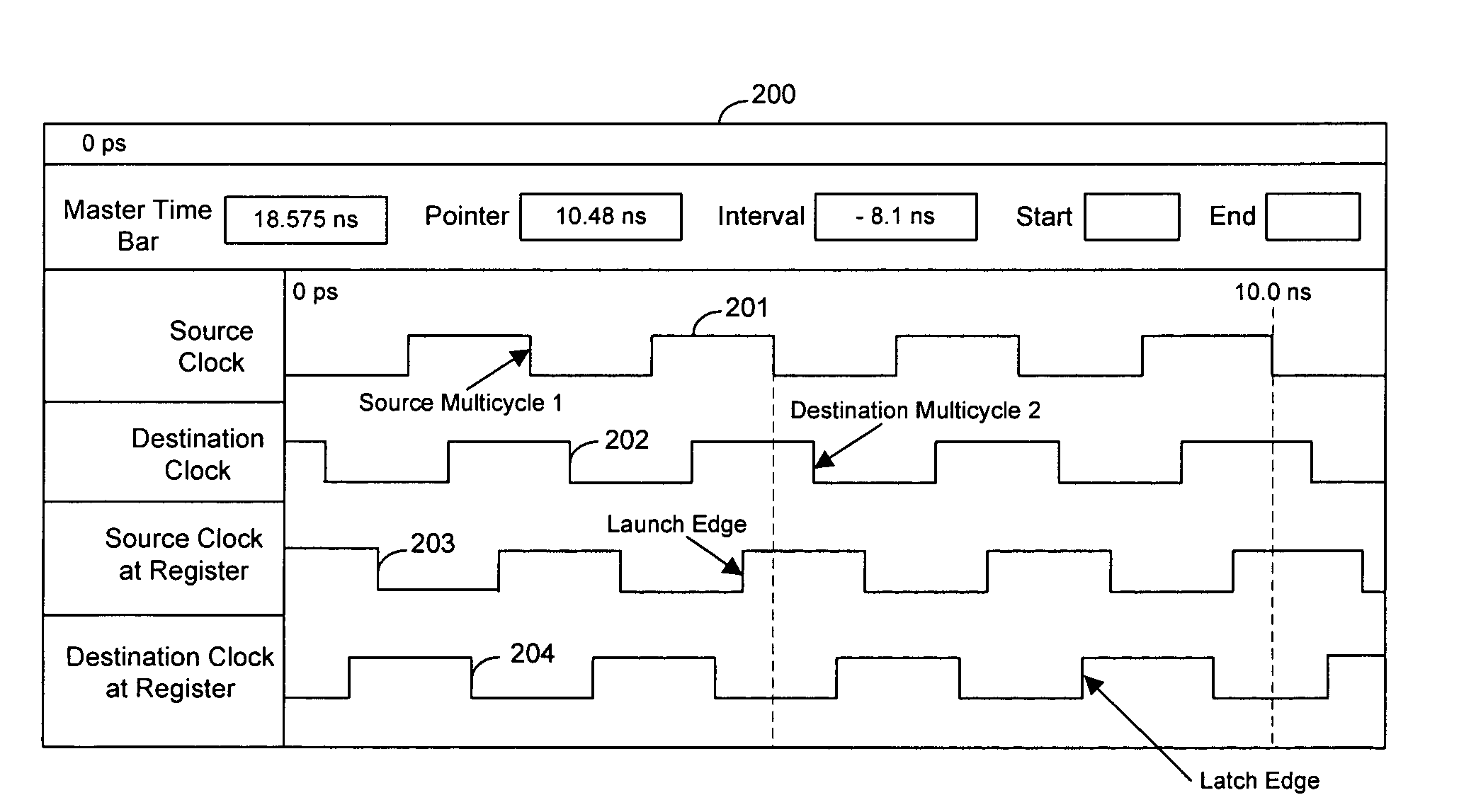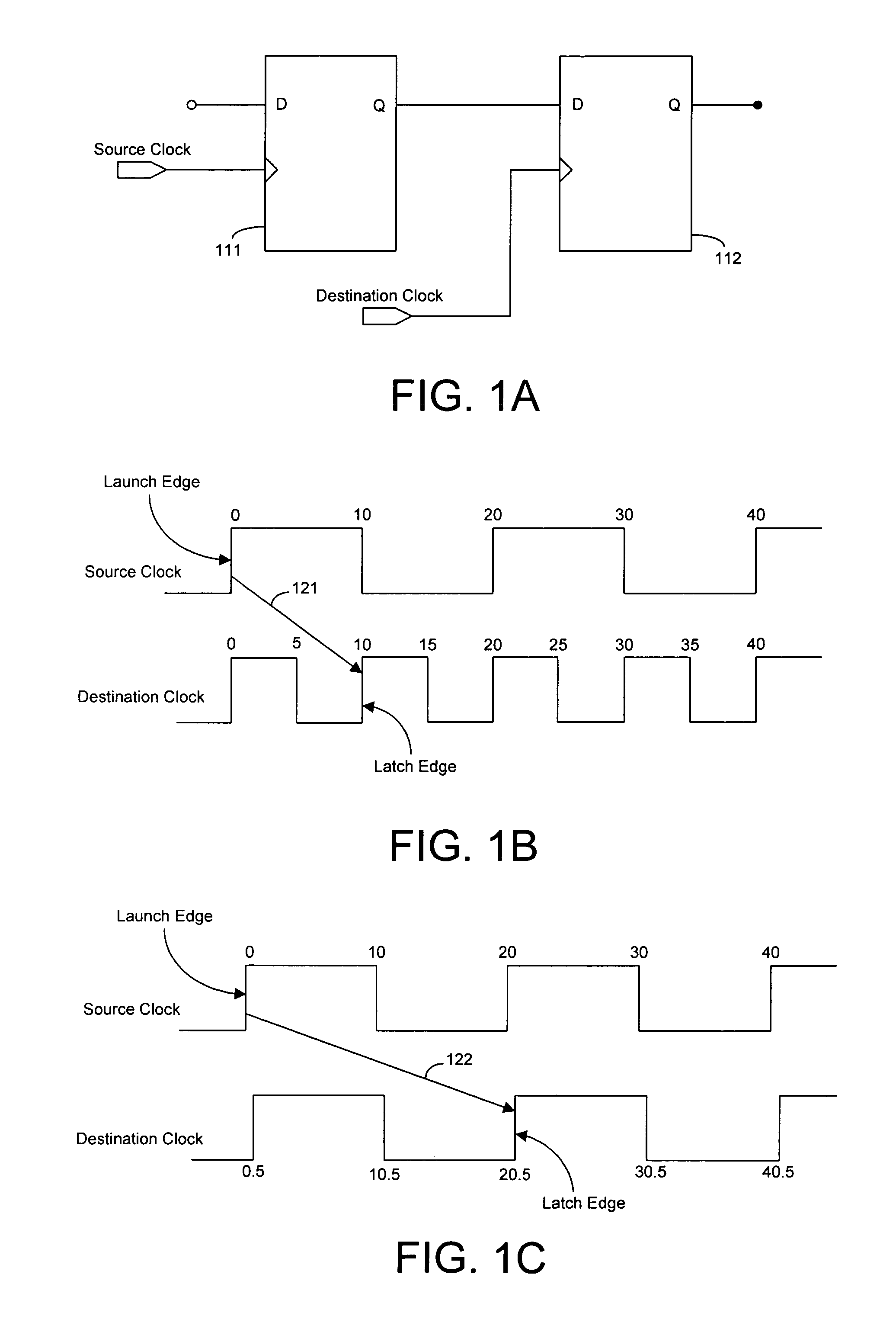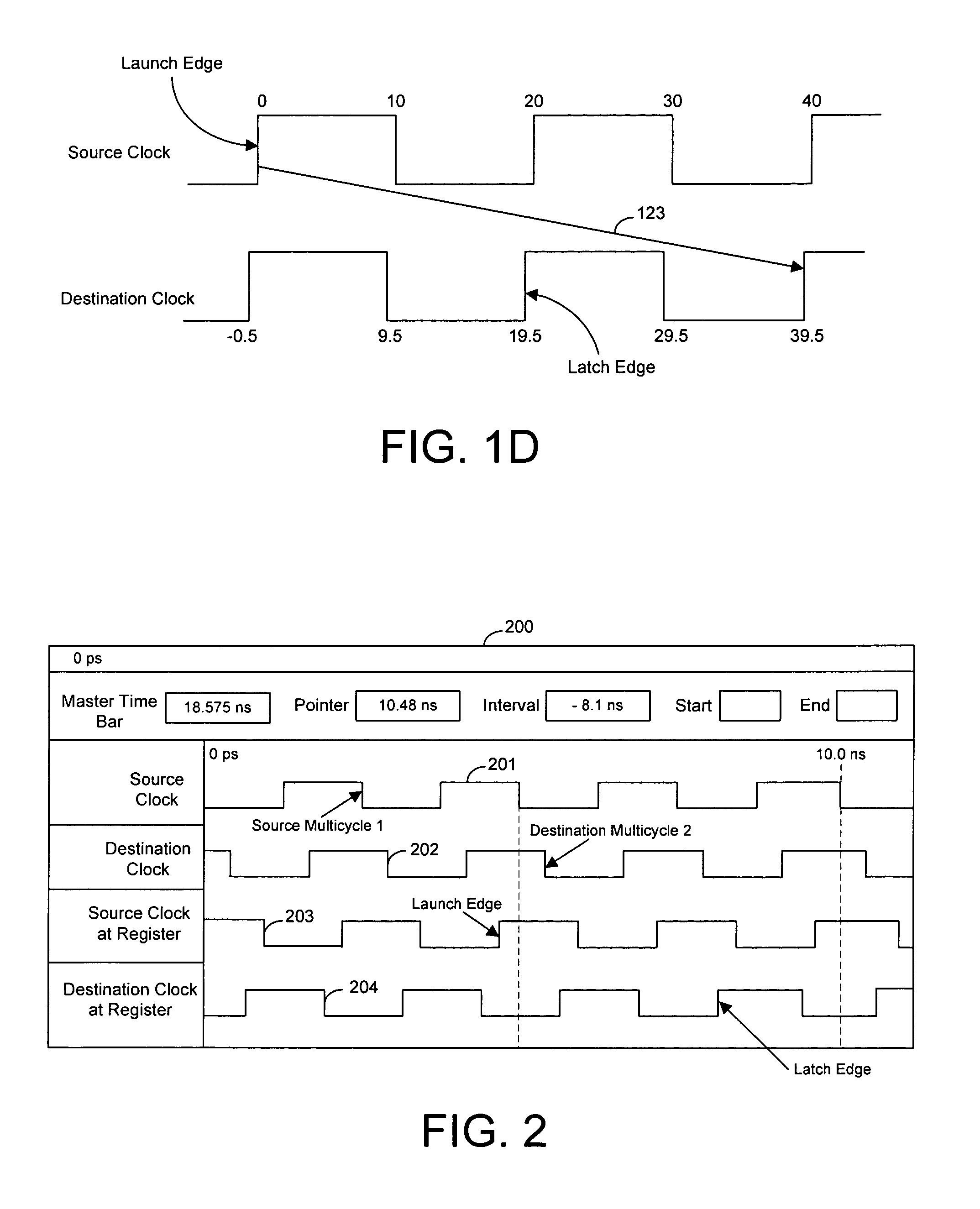Techniques for graphical analysis and manipulation of circuit timing requirements
a technology of circuit timing and graphical analysis, applied in the direction of 2d-image generation, instruments, generating/distributing signals, etc., can solve the problem that TM ii does not allow a user to easily determine if he is a user, and achieves the effect of accurate timing data, easy visualization of relationship between different signals, and easy extraction of relevant timing data
- Summary
- Abstract
- Description
- Claims
- Application Information
AI Technical Summary
Benefits of technology
Problems solved by technology
Method used
Image
Examples
first embodiment
[0062]The present invention can determine the portions of the relevant waveforms to display in the graphical user interface (e.g., interface 200) using a variety of techniques. A first embodiment is now discussed in detail. Each of the waveforms for the relevant signals are displayed across the same time interval. The start time for this time interval is selected by determining the earliest event of interest.
[0063]Using the example discussed with respect to FIG. 1, the earliest event of interest can be selected to be one full Source Clock period before the launch edge or one full Destination Clock period before the launch edge. The earliest event of interest is the earlier of these two points in time.
[0064]The end time for the time interval displayed in the graphical user interface is selected by determining the latest event of interest. The latest event of interest is selected to be one full Source Clock period after the launch edge or one full Destination Clock period before the l...
second embodiment
[0085]A user can also add or delete an inversion between a clock signal at its source and the same clock signal at a circuit element. In one embodiment, moving arrow 401 to a falling edge causes the inversion in Destination Clock to be automatically deleted. In another embodiment, moving arrow 401 causes the present invention to automatically move arrow 402 to a correspond clock edge at the clock source. In the second embodiment, moving both arrows 401 and 402 deletes the inversion in Destination Clock.
[0086]According to still further embodiments, an interactive graphical user interface of the present invention can display data signals in addition to control signals. The interface can display arrows that point to relevant points on the data signals (e.g., when the data signals are received or captured by certain circuit elements). The interface also allows the user to move the arrows so that they point to different time points on the waveforms graphs.
[0087]The present invention prov...
PUM
 Login to View More
Login to View More Abstract
Description
Claims
Application Information
 Login to View More
Login to View More - R&D
- Intellectual Property
- Life Sciences
- Materials
- Tech Scout
- Unparalleled Data Quality
- Higher Quality Content
- 60% Fewer Hallucinations
Browse by: Latest US Patents, China's latest patents, Technical Efficacy Thesaurus, Application Domain, Technology Topic, Popular Technical Reports.
© 2025 PatSnap. All rights reserved.Legal|Privacy policy|Modern Slavery Act Transparency Statement|Sitemap|About US| Contact US: help@patsnap.com



